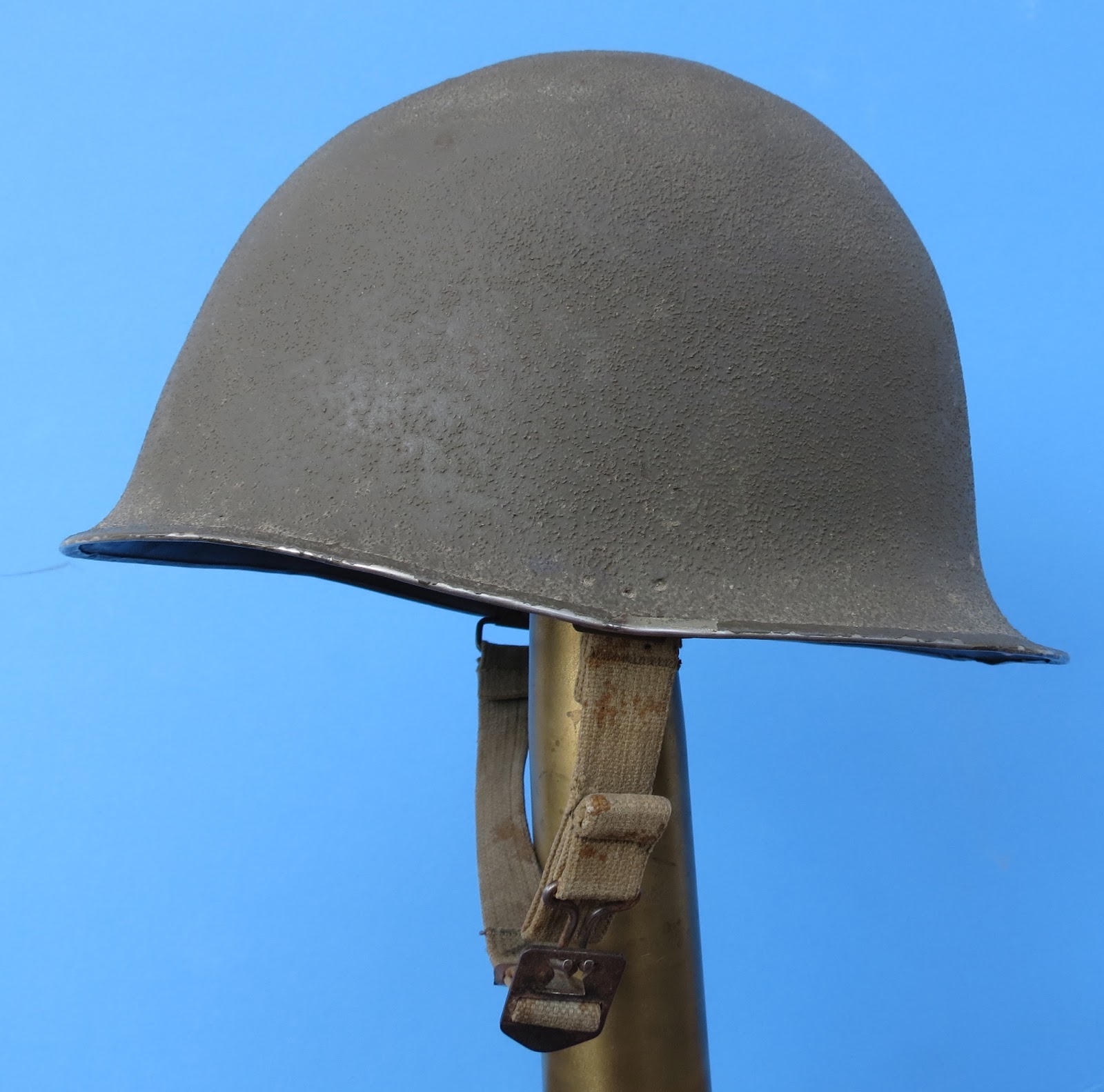In the post- WWII era, France adopted several helmets, none of which were found to be suitable to the French. They used cast-off M1s from the United States, the odd m. 41 Jeanne d' Arc (DeGualle) helmet, and the gererally unpopular m.51 which was merely a French re-design of the two-piece M1.
The utterly unique, and decidedly odd-looking, m.41
The clumsy, ill-fitting, and unatractive m.51
France was looking for a distinctly French helmet, which was wonderfully achieved in the m.78 f1.One of the last, if not the last, steel helmets designed, and manufactured, was the French m.78 f1 helmet. This helmet served France until the very early 1980s to the very early 2000s; and is, in my opinion, one of the most attractive and well designed helmets ever.
I find the shape of this helmet similar to many of the Eastern block countries of the Cold War era, especially the Soviet m.40 - the lines are very similar. Sorry for the soft-focus - I think I had the camera in "Joan Crawford-mode."
The camouflge is the CE (central Europe) version of the US woodland pattern, The colors are nearly the same, but the color blocks are considerably larger than the traditional woodland pattern.
Securing the cover to the shell, and integral to the camouflage cover, is a rubber bumper circling the entire lower edge of the helmet.
Here's a tip, if you acquire this helmet, think twice about removing this cover as it comes off fairly easily, but is an absolute bear to get back on.
The cover is comprised of a rubber ring and four panels meeting at the dome.
The liner may be one of the most efficient, well-designed, and comfortable of any 20th century helmet.
The straps are synthetic. and the snaps that secure both ends of the chinstraps are very robust. The double set of snaps allows adjustment for the use of a Gasmask. The snaps also provide quick, and spontaneous, release when nearby explosions happen; the quick release, under -pressure, helps to prevent neck-injuries in those instances.
The comfortable, and well-fitting chincup is a combination of leather, synthetic leather, and plastic. It also has well-placed ventilation holes. Good ventilation and comfort are hallmarks of this helmet.
This example is the earlier of two versions of the f1 helmet. In the second version, the dome pad is a six-fingered star, which increased both comfort and ventilation.
Sliding buckles allow for a good fit on all straps.
Sponge-rubber or neoprene spacers provide indentation protection for the head of the wearer; there is a lot of resiliance in the suspension of this helmet.
Those familiar with the US M1 helmet will recognize these "A" washers. Connected by a screw and nut which pass through the shell, they help secure the suspension to the shell. The screw and nut combination characterizes the earlier of two versions of the f1.
Velcro tapes secure the headband to the suspension.
The Chinstrap is of a three-point design, making this suitable for airborne troops.
Velcro allows for adjustment of the headband. It is very easy to get a good fit with this helmet.
Removing the cover reveals United Nations livery.
Now for a few action shots of this effective, well-designed, handsome, and soldier-friendly helmet:
The m.78 f1 helmet closed out the 80-some-odd year history of the steel combat helmet. How fitting that the nation which produced the first steel combat helmet would field the last as well.
See you next time with another cool helmet from the collection.
Sources:



























1 comment:
Oh no! You have misnamed one of my favourite helmets! The Jeanne d'Arc you mention is NOT a M41 (or even a mle41...) but the mle45, design concluded and produced *after* the end of WW2. There are supposed to be extant examples with '1945' dates but I've never seen one - most of those I have or have seen are dated 1950, though some of those issued to the Army (less than quarter of the whole run) are dated in the late 1940s. Army and Air Force helmets are identical except for colour finish - brownish green for Army, blue for Air Force. Most helmets went to the Air Force and were certainly used during the the period of French IndoChina war, after the introduction of the mle51, though they were soon withdrawn and some went to police units.
There's definately a family resemblance to the variety of helmets produced for French mobile troops during the 1930s, and obviously a trail back to the Adrian with the crest and obvious nape shield, and it was indeed designed to be very 'French'.
Post a Comment